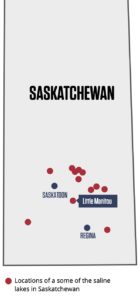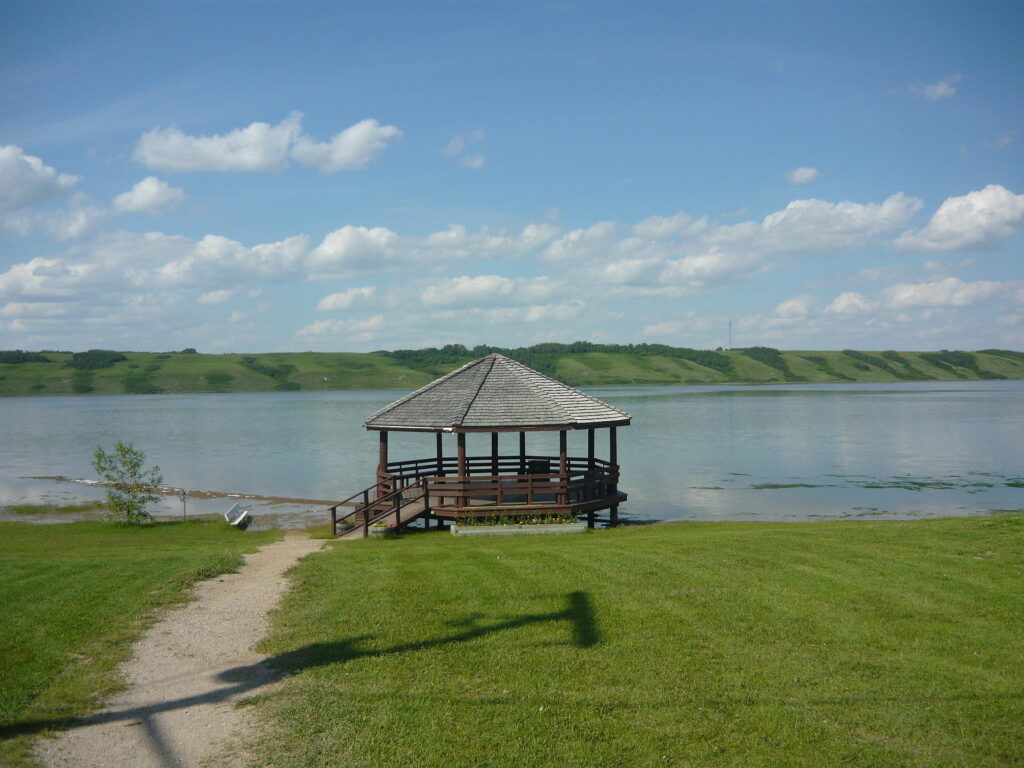Saline lakes
Lakes usually have very low concentrations of salts, but some lakes, including many in Canada, are different. A large number of lakes in Saskatchewan are considered “saline” because of their naturally high salt levels. Like all lakes, these lakes are influenced the the soils and groundwater that surround them. The geology, physical geography, and climate of southern Saskatchewan are responsible for the development of these lakes.
Remember, every lake has its own “normal”!
Lakes are considered to be saline when the concentration of salts is higher than 3 parts per thousand (ppt). We measure salt levels of freshwater in parts per million. The ocean has salt concentrations of around 35 parts per thousand (ppt), which is 35,000 parts per million. Lakes in Saskatchewan can range from 0 (freshwater) to over 100 parts per thousand – for example, Little Manitou lake has salinity that can reach over 100 ppt! This means that some of these saline lakes are saltier than the ocean!

What is the chemical makeup of a saline lake?
There are many types of chemicals that make a saline lake salty – not just ‘table salt’, or sodium chloride. The type and concentration of chemicals is unique to each lake. Magnesium sulfate is one really common salt in these saline lakes.
The salinity of saline lakes can be seasonal. Often, the salinity gradually increases over the summer and then decreases during the spring run-off.
Learn more about salinity here!
How does salinity affect living beings in the ecosystem?
The unique chemistry of saline lakes provides challenges and opportunities for species in the ecosystems. Most fish species cannot tolerate a saline environment. Some fish species can tolerate a moderately saline lake – about 15,000 parts per million – but only the nine-spined stickleback thrives in Saskatchewan lakes that are saltier than 20,000 parts per million. Phytoplankton and aquatic plants are common to these lakes, as is the case with freshwater lakes.

How do you test the water quality of a saline lake?
Unique, salty lakes call for different tools to test water quality than we would usually use on a freshwater lake. To test salinity, a key measure of the amount of salt dissolved in a saline lake, we use a digital salinity meter or an analogue refractometer. These tools will both tell us how salty the lake is. Saline lakes also often have unusual baseline levels for pH, chlorine, and other parameters.
Water Rangers supplies the tools you need! If your lake requires additional specialized tools to measure baselines, contact us and we will see if we can supply you with what you need.
-
 Salinity meter$55.00
Salinity meter$55.00
